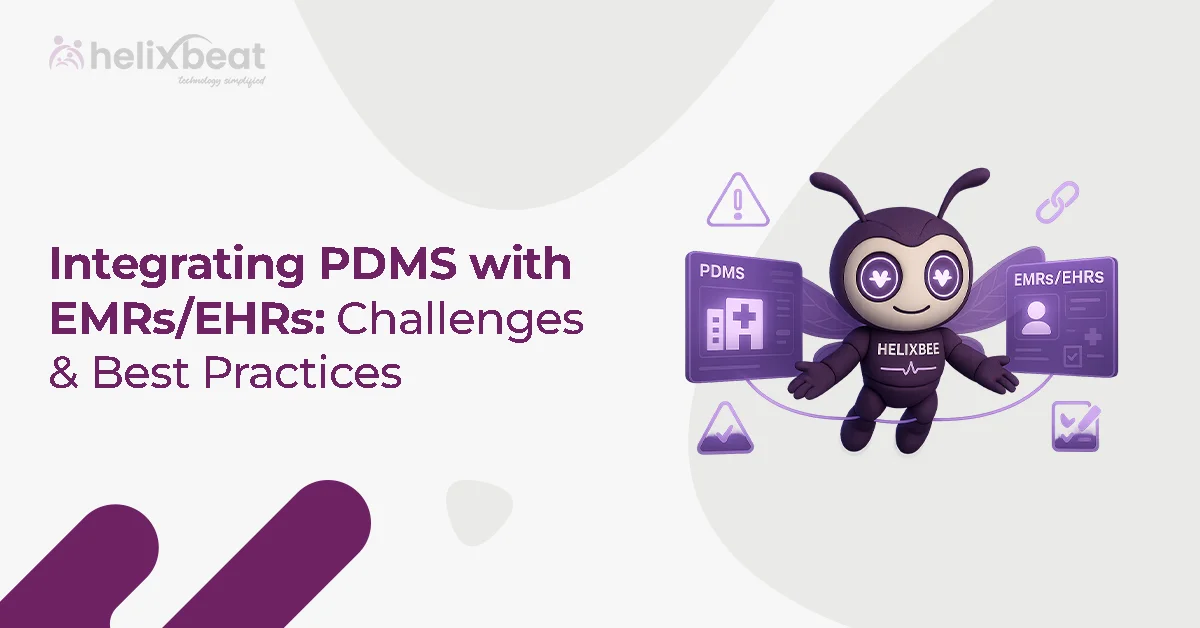According to a study by Harvard Business Review, increasing patient retention rates by just 5% can boost profits by 25% to 95%. For healthcare providers, hitting the right balance between patient acquisition and patient retention is required for maintained growth. While acquiring new patients can inject new revenue into a practice, retention strategies help build lasting relationships and promote trust, resulting in repeat visits and referrals.
By exploring the dynamics of both strategies, healthcare providers can better navigate the complexity of managing patient relationships, optimizing their marketing spend, and driving overall practice growth. In this blog, we’ll dive into the details of each strategy, the challenges that come with them, and how healthcare providers can leverage data and the right tools to master patient acquisition and retention.

Table of Contents
What is Patient Acquisition?
Patient acquisition is the process healthcare providers use to attract and bring new patients into their practice. It involves digital marketing, referrals, and outreach strategies to increase awareness and encourage potential patients to choose their services.
For healthcare businesses, effective patient acquisition is crucial for growth and sustainability. A strong patient acquisition strategy helps build a steady flow of new patients, improves brand visibility, and balances patient retention efforts. Working with a specialized patient acquisition company or using patient acquisition marketing solutions can make these efforts more efficient and impactful.
12 Strategies to Acquire New Patients: Proven Patient Acquisition Techniques
Here are 12 of the most effective tactics broken down for clarity:
- Optimize Your Website for Patient Acquisition
- Ensure your website is easy to navigate with a clean design.
- Make it mobile-friendly since many patients search on smartphones.
- Use clear and compelling CTAs like “Book Now” or “Request a Consultation” on every page.
- Include online forms that are quick to fill out to reduce friction.
2. Improve Local SEO and Google My Business Presence
- Claim and optimize your Google My Business listing with accurate details.
- Use location-specific keywords so local patients can find you easily.
- Encourage patients to leave reviews on Google to boost local rankings.
- Post regular updates and photos on your GMB profile to keep it active.
3. Invest in Targeted Paid Advertising
- Use Google Ads to target keywords relevant to your services and location.
- Run social media ads on platforms like Facebook and Instagram to reach specific demographics.
- Use geo-targeting to focus on patients in your area.
- Track ad performance to optimize your budget and ad copy continuously.
4. Publish Quality Content and Educational Resources
- Create blog posts answering common patient questions and concerns.
- Use videos and infographics to explain procedures or health tips.
- Share content on social media and newsletters to expand reach.
- Position your practice as a trusted source of medical information.
5. Engage Patients on Social Media Platforms
- Share patient success stories and testimonials to build trust.
- Post regular updates about your services, staff, and health tips.
- Host live Q&A sessions to interact directly with potential patients.
- Use targeted social ads to boost your posts’ reach.
6. Use Personalized Email Marketing
- Send newsletters with relevant health information and practice updates.
- Include appointment reminders and special offers to keep patients engaged.
- Segment your email list based on patient interests or demographics for better targeting.
- Encourage patients to forward emails to friends and family.
7. Offer Convenient Online Appointment Scheduling
- Provide a simple and accessible booking system on your website.
- Allow patients to choose dates and times without calling the office.
- Send automatic confirmations and reminders to reduce no-shows.
- Integrate with your practice management software for seamless operations.
8. Leverage Patient Reviews and Testimonials
- Actively request feedback from satisfied patients.
- Display positive reviews prominently on your website and social channels.
- Respond professionally to all reviews to demonstrate care and accountability.
- Use video testimonials to add authenticity.
9. Build Referral Programs
- Offer incentives for current patients who refer to new ones, like discounts or gifts.
- Partner with local businesses or other healthcare providers for mutual referrals.
- Provide referral materials like flyers or digital badges to make sharing easy.
- Track referrals to reward participants and refine the program.
10. Host Community Health Events
- Organize free health screenings, workshops, or wellness seminars.
- Participate in local fairs and expos to increase visibility.
- Use events to build personal connections with potential patients.
- Collect contact info to follow up with attendees later.
11. Implement Retargeting Advertising
- Show ads to website visitors who didn’t book an appointment.
- Use personalized messaging to remind them of your services.
- Retarget across social media and display networks to maximize reach.
- Monitor campaign data to refine messaging and audience segments.
12. Partner with a Patient Acquisition Company
- Use platforms like Helixbeat for campaign automation and tracking.
- Leverage data analytics to identify the most effective marketing channels.
- Personalize communication based on patient behavior and preferences.
- Continuously optimize strategies using real-time performance insights.
Challenges & Solution: Patient Acquisition & Patient Retention
Partnering with a patient acquisition company enables healthcare providers to leverage advanced marketing solutions, data analytics, and engagement tools that drive both new patient acquisition and retention effectively.
| Patient Acquisition Challenges | Patient Acquisition Solutions |
| Rising Patient Expectations | Use personalized, patient-centric digital marketing and seamless communication channels. |
| Complex Regulatory Environment | Implement privacy-compliant marketing strategies and work with experts familiar with regulations. |
| High Cost of Acquisition | Optimize marketing spending through targeted campaigns and data-driven decision-making. |
| Fragmented Patient Journeys | Employ multi-channel marketing and track patient behavior across platforms for better targeting. |
| Limited Resources and Expertise | Partner with a specialized patient acquisition company for end-to-end campaign management. |
Patient retention is challenged by communication gaps, inconsistent experiences, and data management issues, among others. Overcoming these challenges requires a mix of technology adoption, process standardization, and patient-centered communication.
| Patient Retention Challenges | Patient Retention Solutions |
| Poor Patient Communication | Use automated appointment reminders via SMS/email. Provide clear post-visit instructions and follow-ups. |
| Inconsistent Patient Experience | Standardize care protocols. Train staff on delivering consistent, empathetic service |
| Difficulty in Tracking Patient Data | Implement integrated healthcare CRM and analytics platforms. Use data to personalize patient outreach. |
| Limited Patient Engagement | Use patient portals and educational content. Encourage two-way communication and feedback. |
| Technology Adoption Resistance | Provide training and support for patient portals. Offer alternatives like phone calls or in-person visits. |
Key Takeaways
Finding the right balance between acquiring new patients and retaining existing ones is key to endurable development. Attracting new patients provides opportunities while retaining current ones builds loyalty and maximizes value. These strategies work together, which is essential for successful healthcare practice.
In 2025, healthcare providers should adopt a combined approach integrating patient acquisition with strong retention efforts. This strategy reduces costs, boosts patient satisfaction, and increases revenue. Helixbeat offers tools and solutions that streamline both processes. By leveraging data insights and automation, providers can attract new patients while fostering lasting relationships with current ones.
Ready to improve your patient acquisition and retention? Sign up for a Helixbeat demo today to see how our platform can help your practice grow.
FAQs
- What Is Patient Acquisition?
Patient acquisition is the process of attracting and converting new patients to a healthcare practice or facility.
- What Are the 6 Best Patient Acquisition Strategies?
Effective strategies include online marketing, referral programs, community outreach, patient reviews, targeted advertising, and partnerships with other providers.
- What Are Common Patient Acquisition Challenges?
Challenges include high competition, limited marketing budgets, patient trust building, tracking results, and adapting to changing patient preferences.
- What Is the Meaning of Patient Acquisition?
Patient acquisition refers to all activities focused on gaining new patients and improving healthcare practice.
- Patient Retention and Patient Acquisition: Which Strategy Wins?
Both are crucial; acquisition brings new patients while retention maximizes lifetime value. The best approach balances both.
- What Is a Patient Strategy?
It’s a planned approach using marketing and outreach tactics designed to attract new patients effectively.
- What Does a Patient Acquisition Company Do?
They provide specialized marketing services and solutions to help healthcare providers attract and retain patients efficiently.














